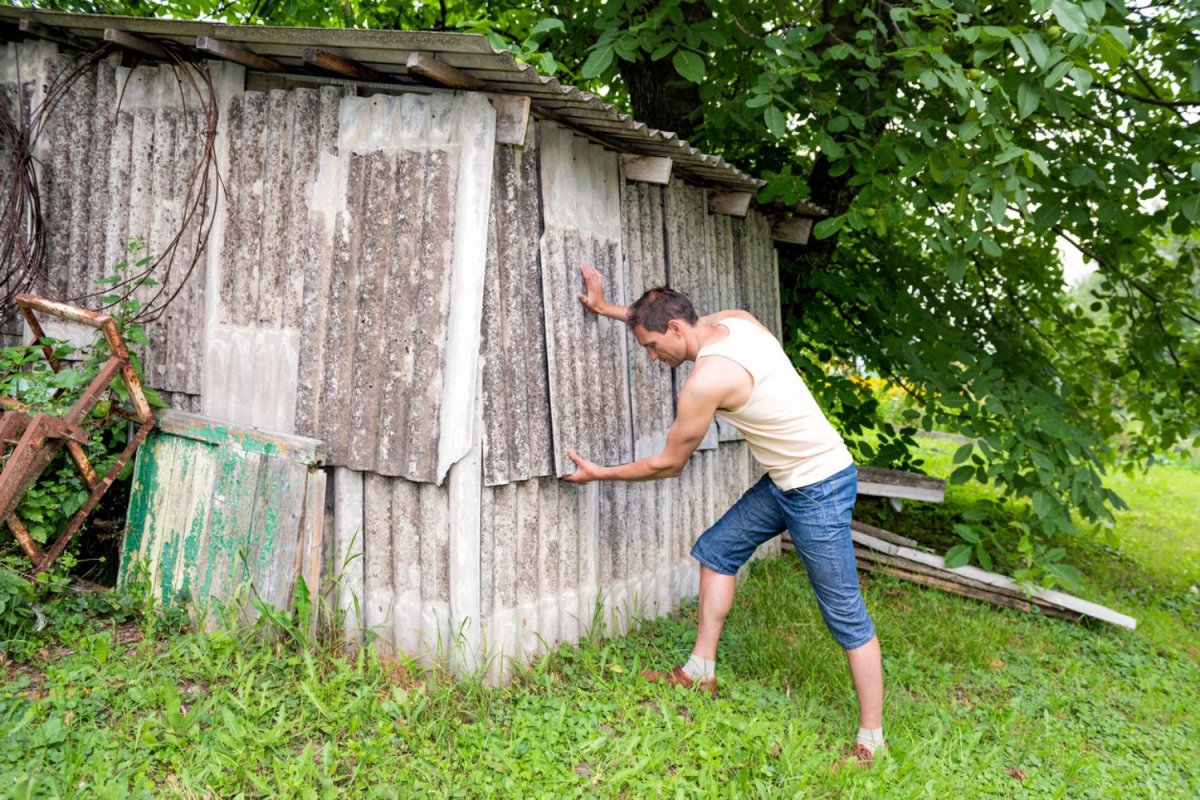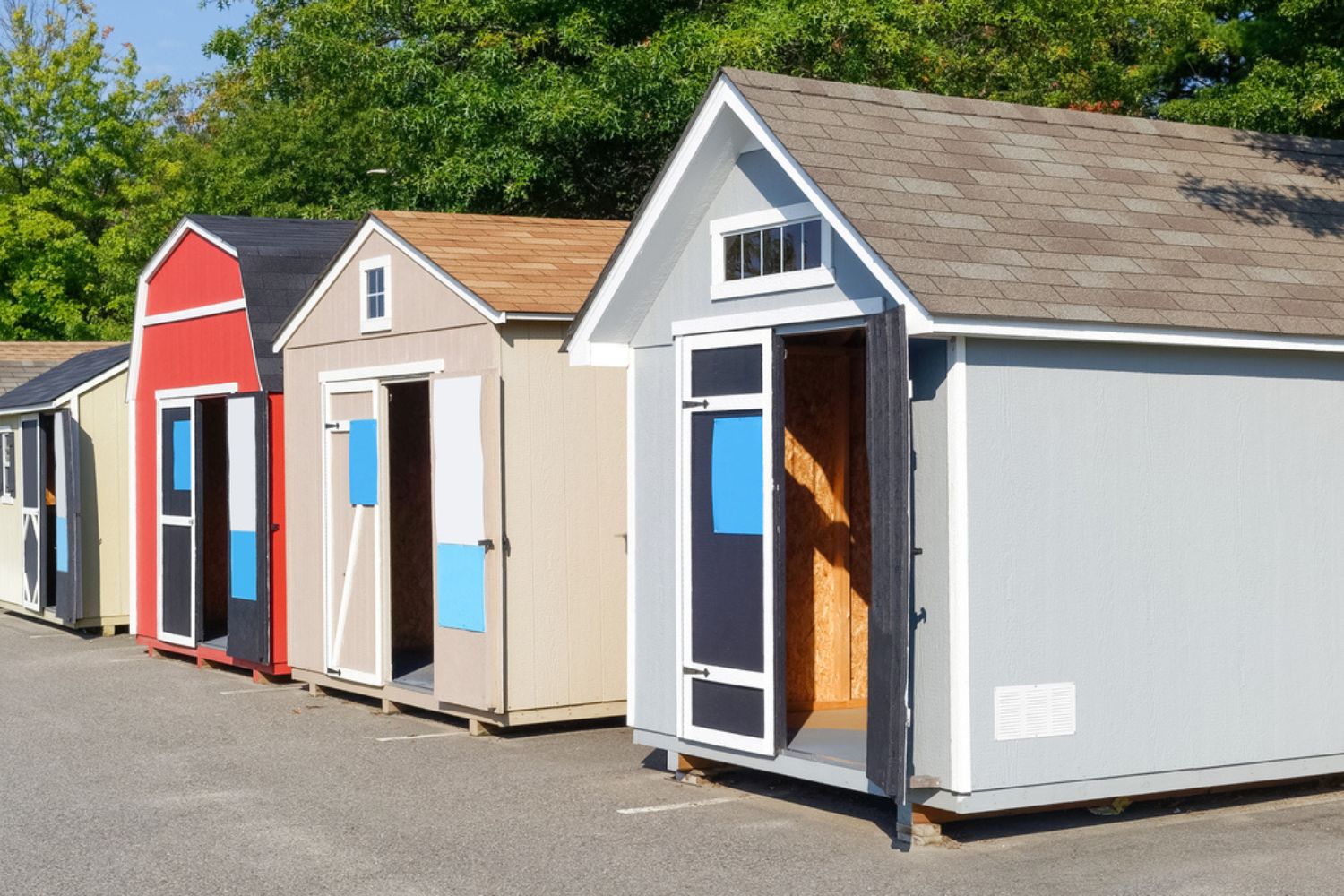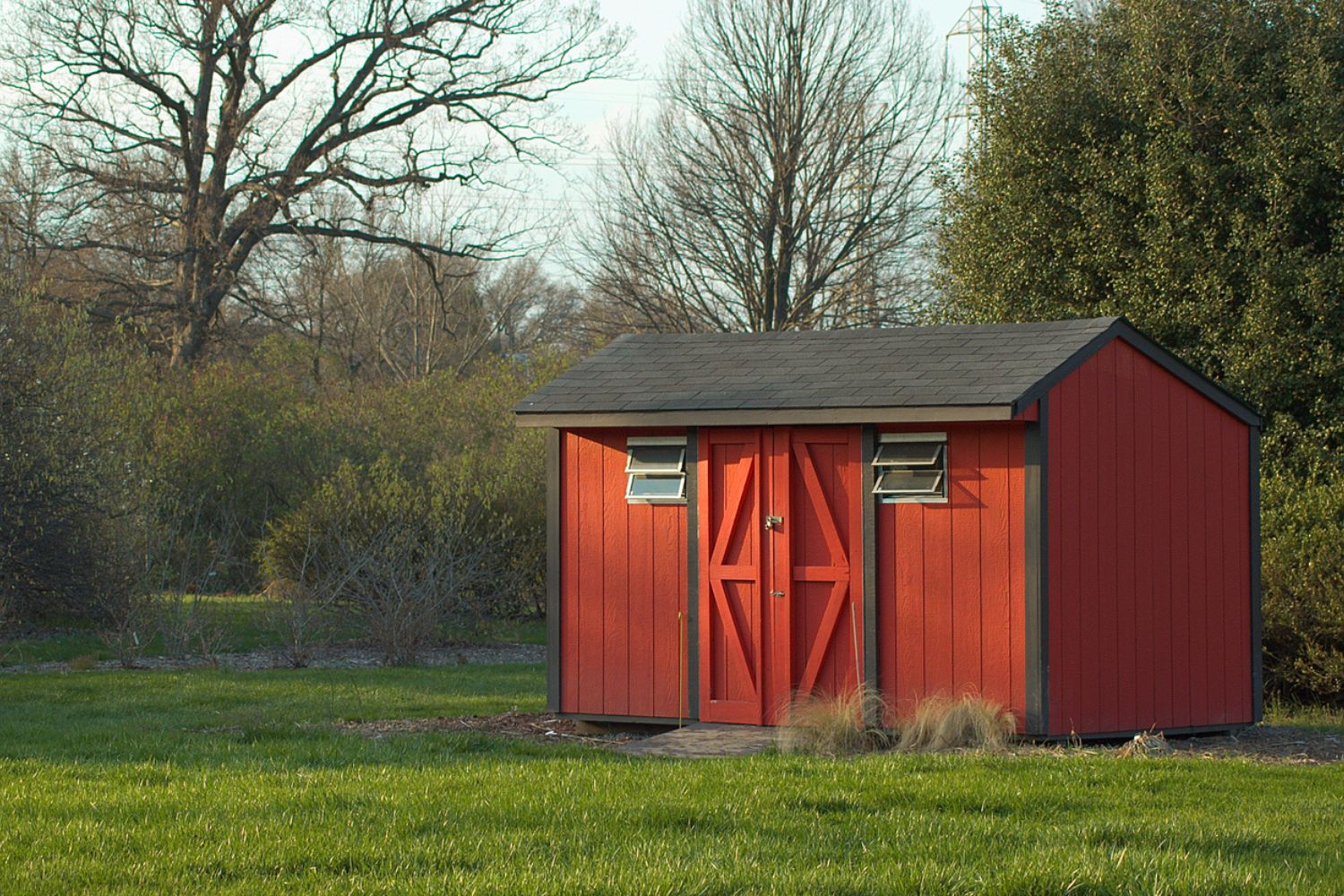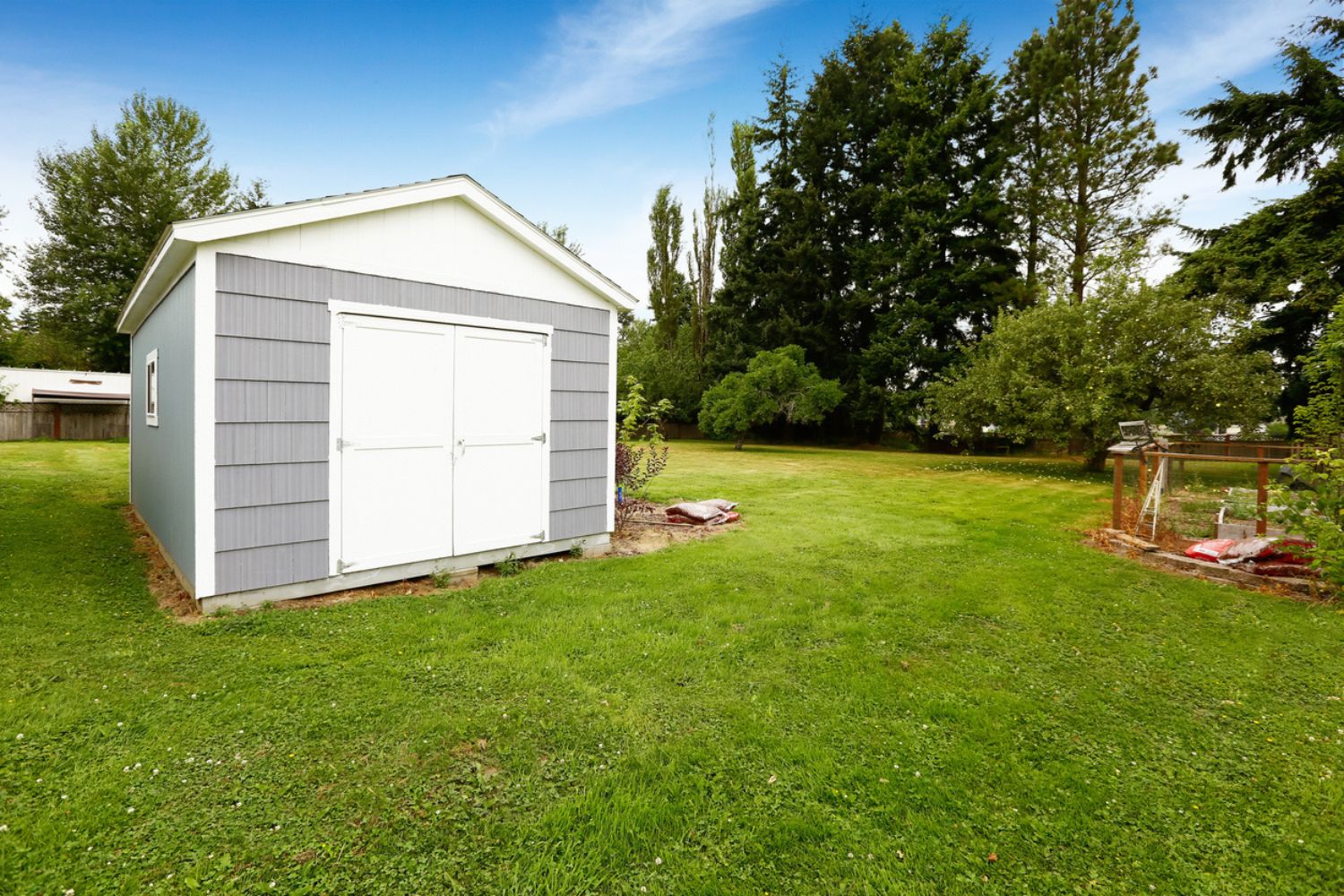

We may earn revenue from the products available on this page and participate in affiliate programs. Learn More ›
- Typical Range: $50 to $100 per hour
There are many reasons a homeowner would want to remove a shed, such as wanting to clear the spot for another use, upgrading to a new structure, or relocating the shed to another area. Storage shed removal cost depends on the size of the shed, the difficulty in accessing the shed area, the condition and construction of the shed, the way it was anchored, and the amount of debris that needs to be cleared from the site. Depending on the type and size of the structure, shed demolition equipment and large trucks may be needed to dismantle and haul away the material. According to Angi and HomeAdvisor, the average cost of shed removal ranges from $50 to $100 per hour. Some companies that specialize in junk removal also provide shed removal service. Shed dismantlers can take care of the heavy lifting and make the task of backyard shed removal an easier process. Since building permits are required in many areas when a structure is built, altered, or demolished, a permit may be needed to remove a shed, especially in large urban areas. There are locations where a permit is not necessary to demolish and remove a shed, so homeowners will want to double check local regulations before beginning a shed removal project.
Shed demolition and removal cost is also affected by the shed connections and attachments. If the structure is hooked up to a gas line, wired for electricity, has plumbing, or sits on a concrete slab, the utilities will need to be disconnected and the concrete slab will need to be broken up, which will result in additional labor and debris disposal costs. This guide will look into the factors that influence shed removal cost, additional costs and considerations, the different types of sheds, how to save on the cost to remove an old shed, and some frequently asked questions regarding the shed removal process.
Factors in Calculating Shed Removal Cost
The cost to remove old shed materials varies based on several factors. While significantly cheaper than the cost to demolish a house, pricing to remove a shed can differ from the national average based on shed size, material, location, condition, foundation type, and local labor pricing.

Shed Size
The bigger the shed size, the more it will cost to tear down and remove. Typically, small and medium-size sheds will require two people and no special equipment for removal. The cost to remove large shed structures will increase due to the additional people and equipment that is needed to safely demolish the shed and haul away the debris.
Shed Material
Certain shed materials cost more to demolish and remove. Disposal fees for heavier materials will be higher than for lighter materials. The most common materials used for shed construction are wood, metal, vinyl, and stone. Homeowners will want to keep in mind that some shed materials can be reused or recycled. If the shed has salvageable materials, the demolition process may cost more for workers to selectively tear down and save specific items. Some construction companies may buy the demolished shed materials, including concrete, if they’re in good condition.
Shed Location
Garden shed removal cost can fluctuate based on the shed’s location. If it’s in an out-of-the-way place where demolition equipment and vehicles will struggle to access the shed, it will cost more. If the shed is right off the driveway and easy to access, however, there likely won’t be any extra charges.
Shed Condition
The shed condition significantly influences the overall price of removal. A newer shed in good condition may be more difficult to remove. For structures that are in good condition, an option would be to sell the shed and have the buyer remove it from the property. Sheds that are in a state of disrepair or are falling down may be easier to remove, but additional charges may be required to ensure the safety of the workers who will demolish the shed.
Foundation Type
The shed foundation type can also affect the removal costs. A concrete foundation will require more tools and equipment to dismantle than a shed that sits on the ground. If there are plumbing pipes or electric and gas lines to deal with, the removal costs can increase as well.
Labor
The overall cost of labor to remove a shed differs based on the geographic location and cost of living. It’s common for contractors and shed dismantlers to charge between $50 and $100 per hour depending on location and the extent of the demolition. Some contractors will charge by the square foot instead of by the hour, so it’s always a good idea for homeowners to double check regarding how labor is charged before hiring for a shed removal project. Labor prices in densely populated urban areas are generally more expensive than in more rural areas, and some months are busier than others for demolition contractors, which will often result in higher prices.

Additional Costs and Considerations
When homeowners are budgeting for shed removal cost, it’s helpful to have information about any additional costs and considerations before they make any decisions. Some factors that can affect the final project price are item removal fees, debris disposal costs, utility disconnection, and permit prices.
Item Removal
If there are items in the shed that can be reused or recycled, they will need to be carefully removed. Items such as windows, doors, wood beams, flooring, shelving, or storage accessories will need to be removed and stored for future transport. This type of removal requires more care and results in more time and increased labor costs.
Debris Disposal
Some contractors may include debris disposal in their project estimate, but others may charge separately for this service. Disposal and cleanup fees typically range from $300 to $1,800, depending on the amount of debris that needs to be hauled away. Some contractors may hire a separate hauling or debris removal service, which can cost from $400 to $800 per truckload. Hazardous waste will involve additional fees for proper disposal.
Utility Disconnection
A professional will need to disconnect gas, water, electric, and plumbing lines. The cost to hire an electrician ranges from $50 to $100 per hour, and this service may be required due to local building codes.
Permits
Each city and town has different permit requirements for demolition, and permits can cost from $100 to $500 or more. It’s important for homeowners to check with the local city government to see if a permit is needed for shed demolition and removal in their area. A reputable local contractor will typically secure the permit for shed removal, but it’s important to know the price of the permit to budget for the overall project costs.

Types of Sheds
The type of shed will impact the price of removal. There are different steps that are required to remove various types of sheds, and disposal fees for individual types of materials will cost more or less depending on the weight of the materials. The most common types of sheds are metal and wood.
Metal
After the doors and windows have been removed, the roof is always the next-best place to start when removing any type of shed. For a sheet-metal roof, screws and nails that hold the sheet metal in place will need to be the first items removed. If rafters are under the roof, those need to be pried apart. If they prove to be difficult to remove, a reciprocating saw may be needed to disconnect them from the walls. The connections between the walls and floor need to be removed next, along with dismantling the shed walls. If the metal shed was placed on a concrete slab, that will need to be broken up and disposed of, unless the homeowner plans to reuse the slab in the same area. Sections of sheet metal that are not damaged or rusted can be reused or sold.
Wood
After the roof has been removed, any wooden parts or siding that can be reused or recycled need to be carefully removed from the wooden shed frame. The connections between the floor and the walls will need to be removed with pliers and an adjustable wrench. If the floor materials will not be reused or the connections can’t be removed, a reciprocating saw will be needed. The wall frames can then be pushed down or knocked down with a sledgehammer.
Do I Need Shed Removal?
Sheds are commonly used to store gardening tools, lawn mowers, snow blowers, shovels, potting soil, and outdoor seating. If the shed is damaged, contains asbestos, is too small to accommodate a homeowner’s storage needs, or a homeowner wants to utilize the space for a different function, it will need to be removed.
Severe Damage
If a shed has fallen into a state of disrepair and is severely damaged, demolition and removal may be the only option. A damaged shed is a safety hazard and comes with the added risk of a homeowner stepping on rusty nails or sustaining injury from structural collapse.
Asbestos
If a shed contains asbestos, it will cost approximately $2,000 to remove and dispose of the asbestos properly. Many older homes contain asbestos, and old sheds may contain the material as well. As asbestos ages, it will flake and become an airborne toxin that can cause cancer and respiratory and gastrointestinal illnesses. If it’s discovered that a shed scheduled for demolition and removal contains asbestos, there are special considerations and processes that must be followed for its safe removal and disposal. Asbestos shed removal cost will be higher than for an old shed that does not contain the hazardous material.
Additional Outdoor Space
If an outdoor shed is underutilized and is taking up valuable backyard real estate, it may be a good idea to remove the structure to free up the space. The extra space can be used for a garden, a children’s play area, a firepit, or a spot to set up comfortable outdoor seating.

Shed Removal: DIY vs. Hiring a Professional
While it may be tempting for a homeowner to remove a shed on their own to save money, it’s typically not recommended to tackle shed demolition and removal as a DIY project. If a homeowner doesn’t have the experience, knowledge, demolition tools, and equipment to demolish and remove a structure safely, they can injure themselves or damage their property. Hiring an expert can ensure a smooth and safe shed removal process. A professional knows how to move a shed and can remove it safely and efficiently, while also taking care of hauling away debris.
How to Save Money on Shed Removal Cost
Homeowners looking to save money on shed removal cost may be tempted to tackle the project on their own, but that can be dangerous due to risks of an uncontrolled structural collapse. Below are some tips to save money without compromising on safety when the time comes to remove a shed.
- Get multiple quotes. Get at least three estimates from reputable contractors in your area to find a price that works with your budget.
- Consider selling. If the shed is still in good shape, consider selling the shed and having the buyer remove the structure from your property.
- Salvage reusable materials. By carefully removing items and materials that can be reused, you can sell them to help make up for removal and disposal costs.
- Ask about discounts. Ask the contractor or junk removal service if they offer senior citizen, military, student, or other types of discounts.
- Check local resources. There may be local services that offer discounted or even free junk removal costs.
Questions to Ask About Shed Removal
Asking a professional contractor the right questions about shed removal cost can help avoid miscommunication and save money. Below are some questions to ask an expert about the shed removal process.
- How long have you been in business?
- How much experience do you have with shed demolition and removal?
- Can I see your business license?
- Are you insured?
- Can you provide references?
- How is your crew trained with regard to safety regulations?
- Do you provide a free estimate?
- Is cleanup and disposal included with the removal cost?
- Does the estimate include permit fees?
- Will you provide an asbestos inspection?
- Are you qualified to safely remove asbestos or other hazardous materials?
- When can you start the shed removal project?
- Who will remove the shed?
- How long will the project take?
- Do you handle recycling?
- How will you protect my yard?
- What is the shed removal process?
- Do you offer any guarantees or warranties?
- How can I leave a review of your services?
FAQs
While many homeowners may think that shed removal is an easy and straightforward DIY project, it’s much safer to hire a professional with the experience and knowledge to complete the project safely and efficiently. Below are some frequently asked questions about old sheds and the demolition and removal process.
Q. What can I do with an old shed?
If an old shed can be repaired, it can be used for many other purposes than just storage. If the roof, windows, walls, or flooring needs attention and the cost of repairs is manageable, the homeowner may consider reusing the structure. Many homeowners repurpose their sheds to be used as a studio, playhouse, office, she shed, man cave, or a relaxing retreat. Making a shed into an extension of the home usually involves making repairs; installing insulation; painting the outside and inside; decorating; running electricity, plumbing, water, and gas lines; and adding storage and countertops. If the structure is solid, the cost of repairs and remodeling may be worth it to have an extra space for relaxing or working.
Q. How can I disassemble my old shed?
To demolish and remove a shed, it’s important for homeowners to know if a permit is required in their area. Knowing what tools are needed, having a disposal plan, and realizing how factors such as shed size, location, material, condition, attachments, and connections impact the overall price is a good place for homeowners to start. Prior to demolishing and removing the shed, any utilities need to be turned off. It’s recommended for homeowners to hire a professional to ensure safe disconnection and to avoid any future issues.
Before demolition, the shed needs to be emptied. Any hazardous materials, such as propane, leftover paint, or pesticides, need to be disposed of properly. Homeowners will want to check the local regulations in their area to see about hazardous material collection dates or drop-off sites. Removing shelving, storage, windows, and doors should be the first step, followed by removing the roof. Moving from top to bottom is the best way to approach shed demolition and removal. After the roof is removed, dismantling the connections between the floor and the walls is the next step, followed by floor demolition. If there is a concrete slab, it will need to be broken up and removed, unless the slab will be reused in the same location. After a homeowner tears down the shed, cleanup and hauling away debris is the last step.
Q. Should I remove or repair my shed?
Bigger issues, such as an unstable base, warped wood, or a rotting structure, may help justify the cost to build a new shed or removing it altogether. Other problems, such as leaks, stability issues, loose panels, unsecured doors or windows, or uneven flooring, can be easily repaired, depending on the severity of the issue. If the cost of repairs is too high for a homeowner’s budget or if the structure is severely damaged, removing the shed may be the best option.
Q. How much does it cost to remove a 16×20 shed?
The average cost per square foot to remove a shed runs from $3.50 to $12.50. The overall removal price can vary due to the accessibility and location of the shed, the size of the shed, the shed construction material, the method of demolition, and local labor costs.
Q. How can I dispose of my old metal shed?
Since the metal used to construct a metal shed is 100 percent recyclable, many scrap metal buyers or metal recycling centers will not charge to take the material off a homeowner’s hands. Some may even pay for the metal. Homeowners will want to check to see if the recycling company or buyer provides the service of hauling away the material free of charge.
Q. How long does it take to dismantle a shed?
Small garden sheds should take two people a few hours to dismantle, while larger sheds will take more time.
Q. Can I sell my old shed?
If the old shed is in good condition, it can be sold. There are many people who are interested in reusing old building materials or repurposing an older structure.
Sources: Angi, HomeAdvisor, Hometown Demolition
